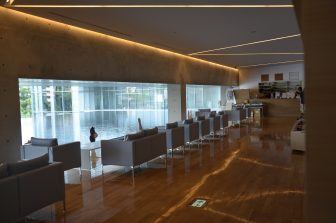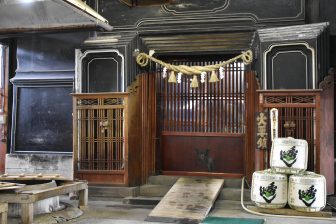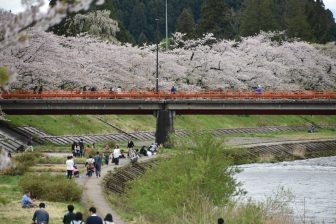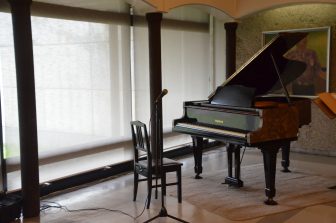
[ Sept.2018 ] The next day, after staying in a Ryokan in the Oga Hot-Spring resort in the Akita prefecture in Japan, we went to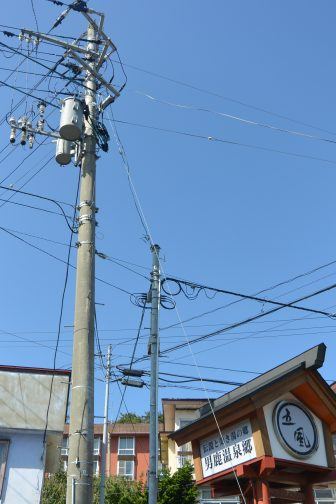
The taxi stand was at the centre of this hot spring resort and it was very quiet, so much so that I wondered if this place had ever been bustling with people.
This time, the shuttle was an ordinary taxi and we were the only passengers.
The driver was a talkative person who was knowledgeable about world affairs and, because we mentioned that we live in London, the topic extended to Brexit and the problems of immigration in Europe.
Apparently, his niece is married to a Frenchman and lives in Hong Kong.
He had a strong local accent, so unfortunately I understood him only about 70% of the time.
I asked him when is the most lively time in Oga, and he said it is around Bon festival time (mid summer) and many families have BBQs at the seaside.
After arriving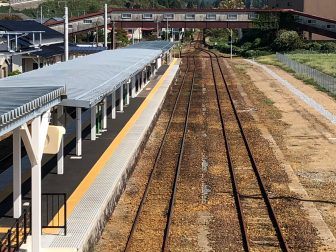
This train was operated by the driver alone.
At Akita, we met our friend who had stayed the night in Akita and we went to the Akita Museum of Art first.
Our purpose was to see a Japanese painter Tsuguharu Foujita’s large-scale work called “Events of Akita”.
The festivals and people’s life in Akita are depicted in this huge picture, which covers a whole wall.
It was magnificent.
Apparently, the height of the painting is 3.65 metres and the width is 20.50 metres.
Unfortunately, photography was strictly prohibited.
The reason why Foujita painted Akita was to do with a wealthy man called Masakichi Hirano in Akita, who was an art collector and he met Foujita in 1934 and became close to him.
In 1936, when Foujita lost his 4th wife suddenly, a French woman called Madeleine, Hirano suggested building a museum to put her spirit to rest.
For this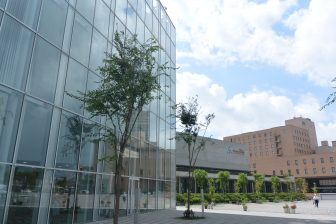
They started construction of the planned museum, but had to give up because of the war and this ‘Events of Akita’ was kept in Hirano’s warehouse for about 30 years.
This is what I learned from the information given there and what I was intrigued by most was the sudden death of Madeleine.
Foujita had three wives before meeting Madeleine, which sounds as if he was a philanderer, but two of the women left him for other men.
According to some online information, Madeleine was a dancer in Paris and the couple travelled from Paris to Latin America and North America before arriving in Japan in 1933.
They lived together, but when Madeleine went back to France temporarily, Foujita started a relationship with a Japanese woman, Kimiyo, who became his last wife later on.
Madeleine was informed about that and hurried back to Japan and in June 1936, she suddenly died.
There are many theories about her death, including suicide and murder, but the leading theory is that her death is related to drugs she used.
When I saw this painting in Akita, I imagined romantically that he concentrated on painting this picture to recover from losing his beloved partner, but knowing that he already had another lover by then, I feel a bit disappointed.
By the way, this Akita Museum of Art itself is something worth checking out.
It was designed by the famous Japanese architect, called Tadao Ando.
The spiral staircase, which does not have any support from the wall or pillars, as well as the large space where you can see the Senshu Park through the water garden, are the speciality here.

